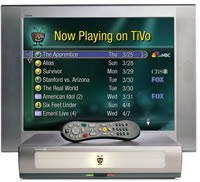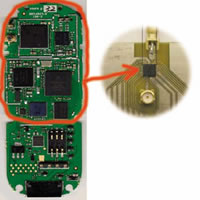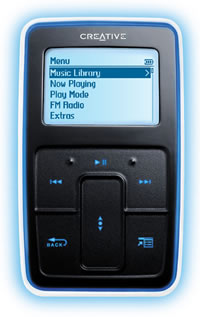 The details of the Cell processor chip designed to power Sony’s PlayStation 3 console will be released in San Francisco today.
The details of the Cell processor chip designed to power Sony’s PlayStation 3 console will be released in San Francisco today.
The result of a devilish melding of the minds of industry giants, Sony, IBM and Toshiba, the chip has taken three years to develop and is reported to be up to 10 times faster than current processors.
Triumphantly billed as a “supercomputer on a chip”, advance reports suggest that this beast of a processor is significantly more powerful and versatile than the next generation of micro-processors announced by their competitors, Intel and AMD.
Utilising several different processing cores that work on tasks together, the chip has been fine-tuned to be able to handle the detailed graphics common in games and the data-chewing demands of films and broadband media.
 The Cell’s architecture is described as scalable from “small consumer devices to massive supercomputers” and when installed inside powerful computer servers, is expected to be capable of handling a breathtaking 16 trillion floating point operations, or calculations, every second. Phew!
The Cell’s architecture is described as scalable from “small consumer devices to massive supercomputers” and when installed inside powerful computer servers, is expected to be capable of handling a breathtaking 16 trillion floating point operations, or calculations, every second. Phew!
IBM will start producing the chip in early 2005 at manufacturing plants in the US, with computer workstations and servers being the first machines off the line sporting the Cell processor.
A working version of the PS3 is expected to be previewed in May 2005 but the full launch of the next generation console is not expected to start until 2006.
High-definition TVs from Sony and Toshiba, a Sony home server for broadband content and the PlayStation 3 all featuring Cell are also due to appear in 2006.
“This is probably going to be one of the biggest industry announcements in many years,” boasts Richard Doherty, president of the Envisioneering research firm. “It’s going to breathe new life into the industry and trigger fresh competition.”
But it’s not all pat-on-the-back stuff with rivals publicly questioning whether Cell’s potential can be realised – while they hastily get to work on alternative multi-tasking methods.
IBM, Sony, Toshiba to reveal ‘superbrain chip’ (ft.com)
PS3 Portal News
PS3Land.com
PlayStation 3: The next generation (CNet)
PlayStation 3 chip to be unveiled (BBCt)
 Squeezed on both sides by ever-competitive satellite and cable providers, TiVo is trying to woo third party developers into creating compelling new add-on services for their product.
Squeezed on both sides by ever-competitive satellite and cable providers, TiVo is trying to woo third party developers into creating compelling new add-on services for their product. A $100 (€76, £53) laptop computer for the developing world has been touted at the World Economic Forum in Davos by Nicholas Negroponte, founding chairman of MIT’s Media Lab.
A $100 (€76, £53) laptop computer for the developing world has been touted at the World Economic Forum in Davos by Nicholas Negroponte, founding chairman of MIT’s Media Lab. Aura Communications has announced the first samples of its LibertyLink LL888 system-on-chip, for enabling high-quality wireless voice and stereo audio. The chip provides wireless stereo headphone capability for MP3 players, portable DVD players and audio-capable mobile phones – or indeed virtually any portable product where digital audio performance must be coupled with long battery life and low cost. The technology was previewed in ‘real life’ earlier his year by Creative Technology, whose wireless-enabled Zen Micro MP3 player is based on the LibertyLink LL888 chip.
Aura Communications has announced the first samples of its LibertyLink LL888 system-on-chip, for enabling high-quality wireless voice and stereo audio. The chip provides wireless stereo headphone capability for MP3 players, portable DVD players and audio-capable mobile phones – or indeed virtually any portable product where digital audio performance must be coupled with long battery life and low cost. The technology was previewed in ‘real life’ earlier his year by Creative Technology, whose wireless-enabled Zen Micro MP3 player is based on the LibertyLink LL888 chip. Shanghai-based Fudan University has developed the country’s first home-made digital TV chip. Not only that, but the chip has passed appraisals by experts from the Chinese Academy of Sciences and Chinese Academy of Engineering, and it’s outperformed European and US standards in terms of sensitivity and anti-jamming capacities – at lower costs.
Shanghai-based Fudan University has developed the country’s first home-made digital TV chip. Not only that, but the chip has passed appraisals by experts from the Chinese Academy of Sciences and Chinese Academy of Engineering, and it’s outperformed European and US standards in terms of sensitivity and anti-jamming capacities – at lower costs. Texas Instruments (TI) has announced they will bring a integrated single-chip solution for mobile phones.
Texas Instruments (TI) has announced they will bring a integrated single-chip solution for mobile phones. Following the release of their
Following the release of their 